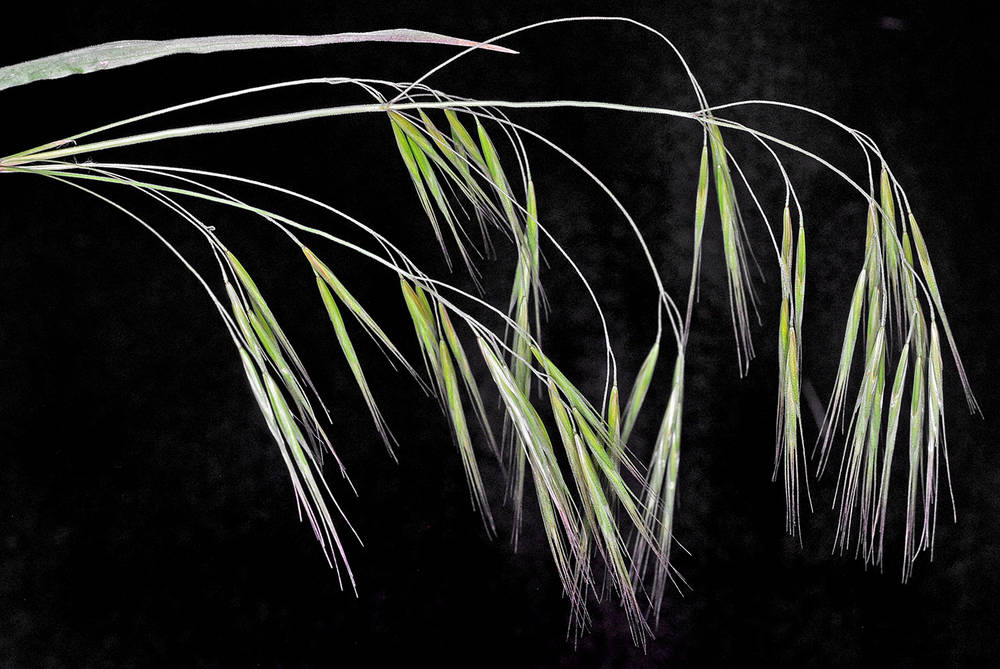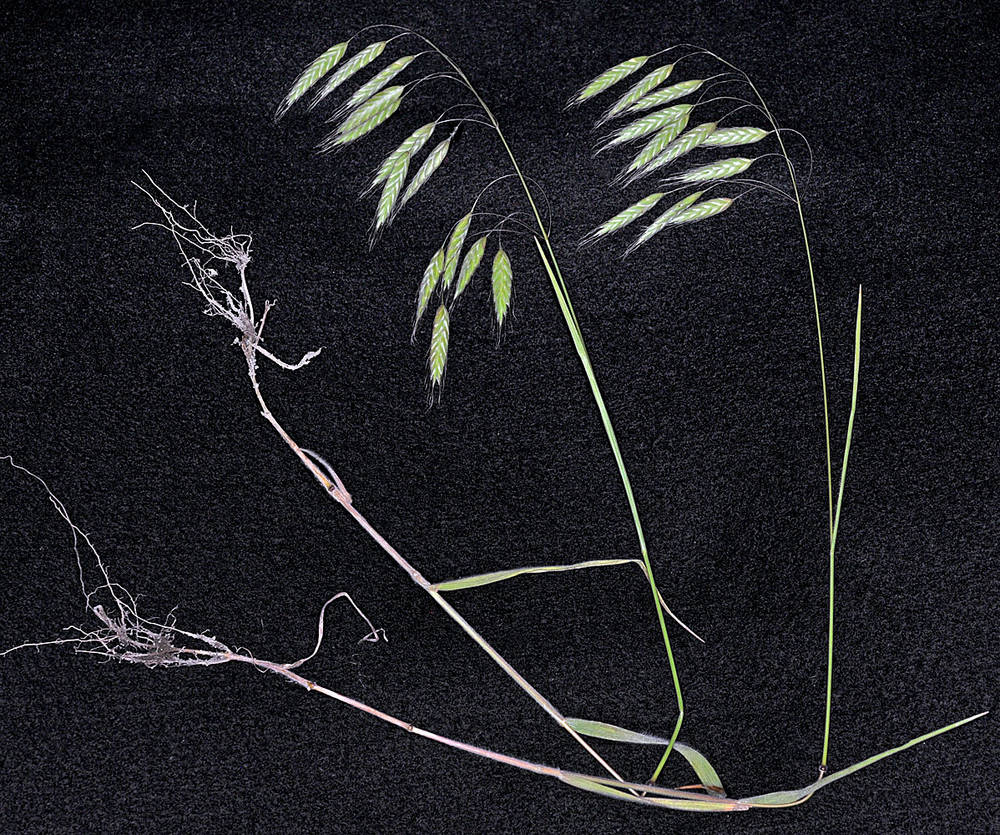Bromus tectorum
Bromus
cheatgrass, downy brome, downy chess
brome
puberulent.
sheaths densely and softly retrorsely pubescent to pilose; upper sheaths sometimes glabrous;
blades 1–16 cm × 1–6 mm, softly hairy on both surfaces.
sheaths closed nearly to the top, usually with spreading hairs;
ligules membranous, usually erose or lacerate;
blades usually flat, rarely involute.
5–20 × 3–8 cm; open, nodding;
branches 1–4 cm, drooping, 1-sided and longer than the spikelets, usually at least 1 branch with 4–8 spikelets.
panicles, sometimes racemes or with a single spikelet in depauperate specimens;
disarticulation above the glumes; below the florets.
10–20 mm, moderately laterally compressed, not densely crowded, 4–8 florets.
terete to laterally compressed with 3–30 florets.
villous, pubescent, or glabrous;
lower glumes 4–9 mm, 1-veined;
upper glumes 7–13 mm, 3–5-veined.
unequal, usually shorter than the adjacent lemmas; always shorter than the spikelets, usually acute, rarely mucronate;
lower glumes 1–7(9)-veined;
upper glumes 3–9(11)-veined.
and caryopses with densely hairy tips.
9–12 mm, lanceolate, glabrous or pubescent to pilose, 5–7-veined;
tips acuminate; hyaline; bifid, with teeth 0.8–2(3)mm, awned;
lemma awns 10–18 mm; straight.
5–13-veined, keeled to rounded on the back;
tips entire to toothed, usually awned;
lemma awns (0)1(3); terminal or subterminal.
0.5–1 mm.
(2)3.
ciliate on the keels, adnate to the caryopses.
=14.
Bromus tectorum
Bromus
Disturbed areas, sagebrush steppe, degraded grasslands, roadsides. 0–2400 m. BR, BW, Casc, Col, CR, ECas, Lava, Owy, Sisk, WV. CA, ID, NV, WA; throughout North America; worldwide. Exotic.
Bromus tectorum is a relatively short grass with drooping inflorescences. Similar B. sterilis and B. diandrus have longer glumes, lemmas, and awns, and spikelets that hang down at a shallower angle than those of B. tectorum. The introduction of B. tectorum to shrub steppe habitats during a time of massive overgrazing in the late 1800s has made restoration of native plant communities difficult or impossible, even where grazing no longer occurs. Fast-growing B. tectorum seedlings outcompete slower growing native grass seedlings for water in drying soils. At maturity, the awns make B. tectorum unpalatable to livestock.
Temperate and cool regions worldwide. 100–400 species; 22 species treated in Flora.
Bromes are distinguished by closed leaf sheaths, usually hairy foliage, and relatively large spikelets with several florets. Most have awned lemmas. Bromus is the second most diverse grass genus in Oregon, after Poa. Some of our native species interbreed, and intermediate plants are found fairly often. Within this genus, it is helpful to remember that culm diameters are measured near the middle of one of the lowest elongated internodes. The distance from the base of the lemma awn to the lemma apex should be measured on the distal florets of a spikelet. Lemma lengths are measured on the lowest florets in a spikelet. Lengths of lemmas and spikelets do not include awns. The lower panicle branches are measured from the node on the inflorescence axis to the end of the farthest floret (excluding awns).
Barbara Wilson, Richard Brainerd, Nick Otting
Barbara Wilson, Richard Brainerd, Nick Otting
- Local floras:
BC,
CA,
OR,
WA
- Local Web sites:
CalFlora,
CalPhotos,
Flora NW,
PNW Herbaria
WildflowerSearch
iNaturalist (observations)
USDA Plants Database
- LBJ Wildflower Center
- SEINet
- Plants of the World Online
- Encyclopedia of Life
- Wikipedia
- Google Image Search
- Local floras:
CA,
OR,
WA
- Local Web sites:
CalFlora,
CalPhotos,
Flora NW,
PNW Herbaria
WildflowerSearch
iNaturalist (observations)
USDA Plants Database
- LBJ Wildflower Center
- SEINet
- Plants of the World Online
- Encyclopedia of Life
- Wikipedia
- Google Image Search




